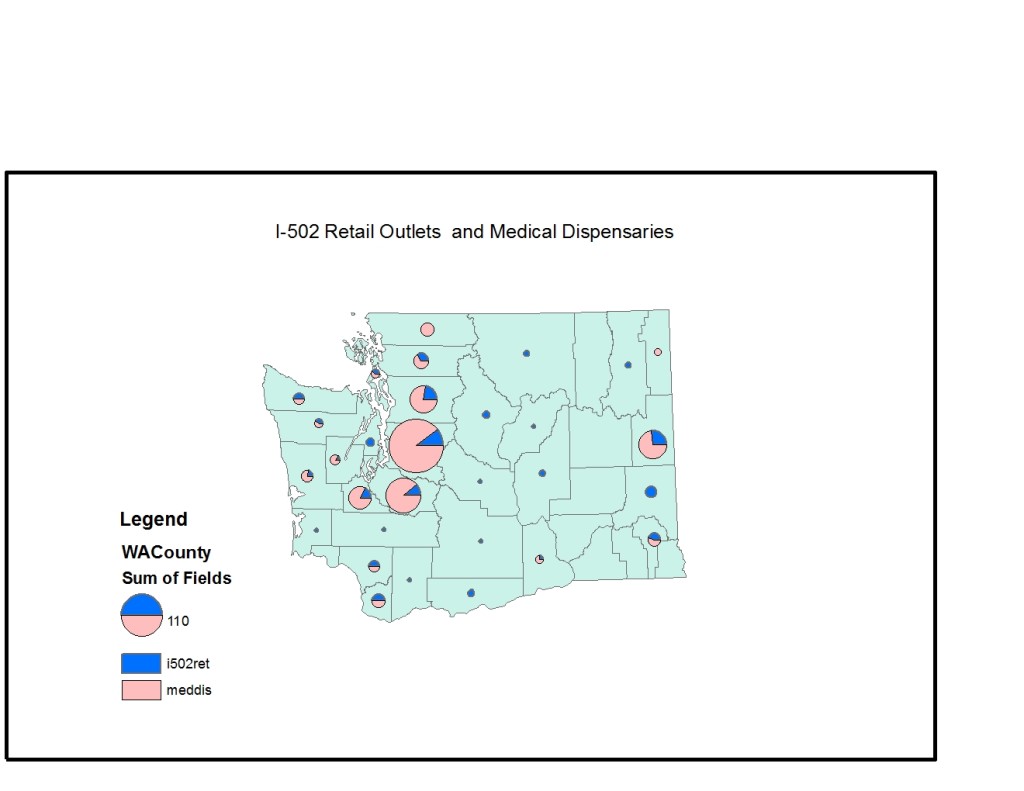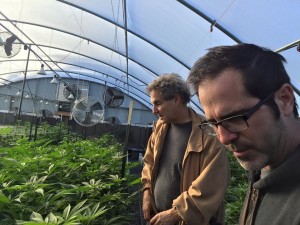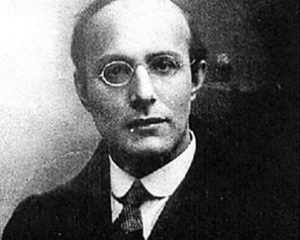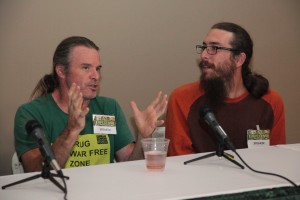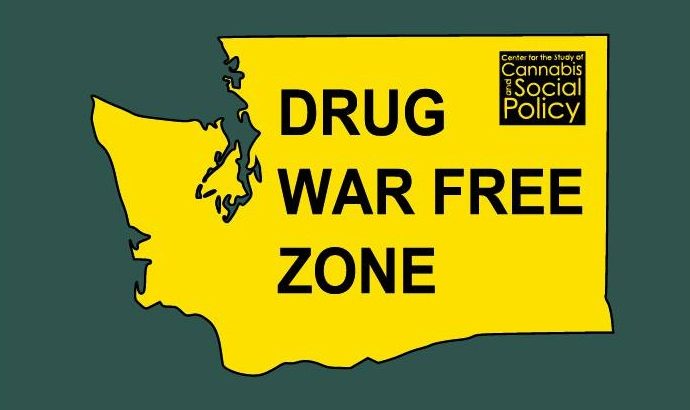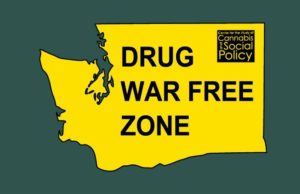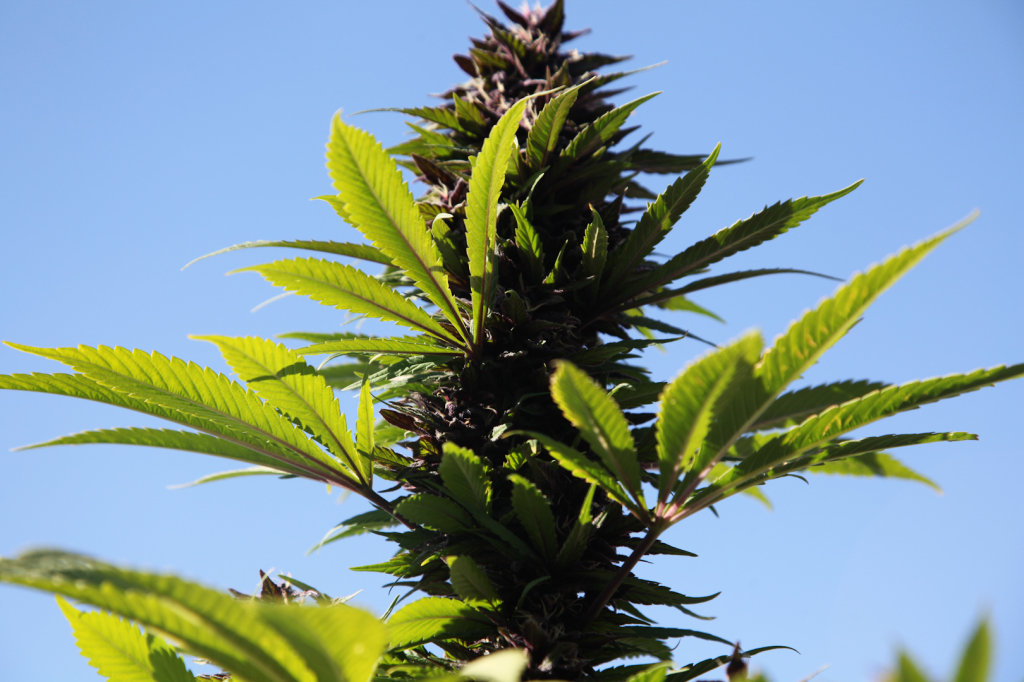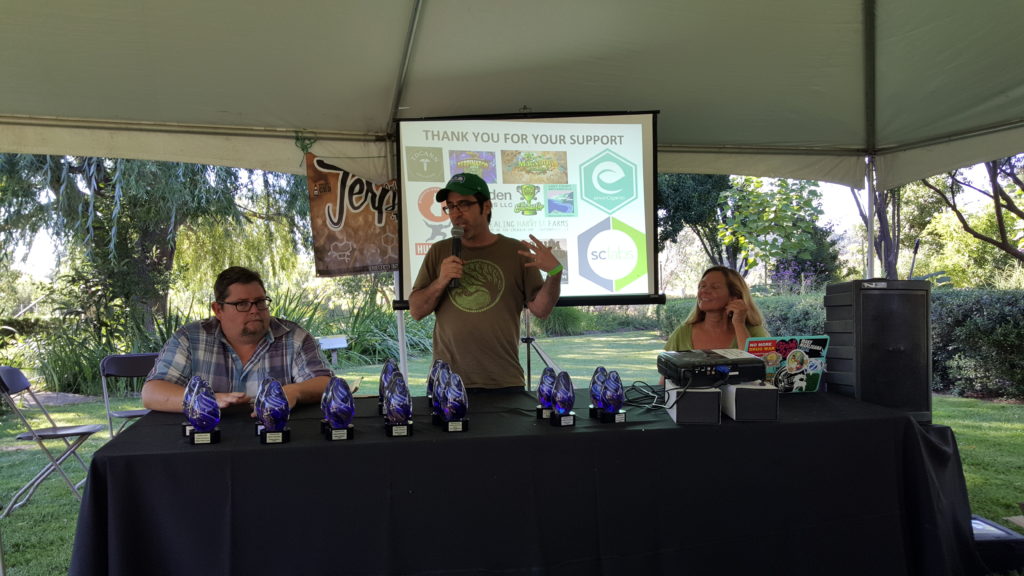
by Dominic Corva, Terpestival™ Producer and Social Science Research Director
Two weeks ago we pulled off the second annual Terpestival™ and Terpene Tournament™ , in Hopland, California. This year’s unique, boutique event was located in California due to new legal restrictions on cannabis events in Washington State, and we succeeded with a very large amount of West Coast social capital. This social capital is comprised of goodwill, volunteer labor, and even a little straight up donation. This post highlights the amazing support generated in support of our annual fundrasing event. Our gratitude will be presented in (somewhat) chronological order.
First, this would not have happened without the support and labor donated by Wonderland Nursery, directed and executed by Kevin Jodrey , his shop manager Dylan Livingearth and the rest of the team at the nursery. Their guaranteed 10 entries that were either hustled from their vendors or donated off their shelves! Wonderland donated 5 entries and delivered 9 others to supply almost half the entries. Thank you Kevin and Wonderland for your undying support of the CASP Mission!
Rick Pfrommer coordinated the judging and delivery to SC labs for 17 entries: 6 from Emerald Pharms vendors, 9 from his own networks, and he accommodated 2 late entries hustled by Jane Stewart of SC Labs, our host testing donor. The late entrant drove his entries to Rick from Santa Cruz and Rick personally delivered those and the other 17 entries to the judges. Rick executed this singlehandedly and our hats are off to him and his volunteer efforts! Rick also played a key role introducing us to event sponsor Jessica Peters of Moxie Meds, in the Bay Area, and created the most gender-diverse judging panel that has ever judged a cannabis cup. Rick is an amazing friend that I met in Humboldt a few years back, and look forward to collaborating with in the future.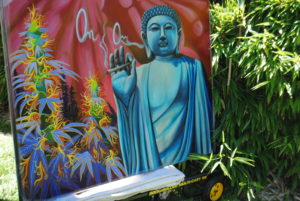
I should note that our entrants reflected our social network, which is especially rich with amazing women in the cannabis industry. We are very proud to have had such a strong female and gender-queer representation at the event!
Our event staff was cobbled together from our social networks as well. Dr. Tony Silvaggio, our CASP-affiliated Humboldt State environmental sociologist brought members from the lacrosse team he coaches and his awesome partner,Kandis Kelsey, a dear friend of mine . They worked security, parking, and spent some time manning the gate.
Dr. Michelle Sexton’s partner, Dr. Darryl Bornhop, contributed considerably in every volunteer capacity we needed. This included working for more than an hour, with Michelle, in the taco truck to accommodate the lunch rush.
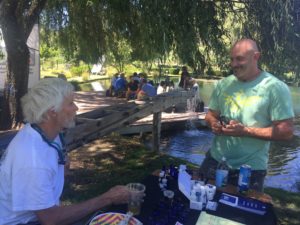
CASP Board member Don E. Wirtschafter contributed not only his welcome and familiar presence to the event, but true to his Rainbow Family ethic, coordinated the grounds sweep and clean-up after the event. Don and I were the last to leave. Donnie also pinch-hit for a moderator that couldn’t make it at the last minute!
Debby Goldsberry, who unfortunately had to back out at the last minute for moderating to the Terpenes and Growing panel, was instrumental. Magnolia Wellness served as strategic drop-off point for entries in the Bay Area. Debby was also a judge for the competition. Debby is a great friend, a fellow veteran of the Cannabis Action Network from the late 1980s and early 1990s, and has provided me personally with mentorship and moral support these last four years.
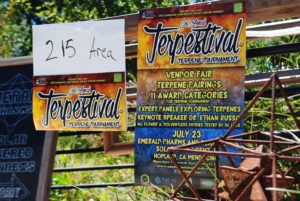 Our event coordinator Alison Edrington was a rock for CASP during the entire 6 months of planning. She literally propped us up on occasions when the going got tough! It was her direct collaboration with the host site owner and cannabis retailer, Emerald Pharms, that took us to the finish line.
Our event coordinator Alison Edrington was a rock for CASP during the entire 6 months of planning. She literally propped us up on occasions when the going got tough! It was her direct collaboration with the host site owner and cannabis retailer, Emerald Pharms, that took us to the finish line.
Allison also brought my friends Dani Burkhart and Thomas Edrington (her husband) to Hopland for help with staffing the event. Thomas created what I believe to be an event innovation: he set “Pokemon Go” lures all over the event, which not only kept the staff happy in the hot sun but provided another invitation to passers-by to discover the event.
The Real Goods Solar Living Center donated the space for the event free of charge, with only a request for insurance. Emerald Pharms itself was a lure for the event: we had many folks who came by to purchase cannabis that stayed for the event. Manager Chelsea Lucich and her staff were terrific hosts, creating the vending spaces in a shady spot on the deck of the dispensary.
Martin Lee of course provided inspiration for the location and was a key resource for for the Real Goods Solar Living Center and Emerald Pharms to be a key part of the fundraiser.
Dr. Ethan Russo once again provided his wealth of knowledge on terpenes and how they modulate cannabinoid bioactivity as the keynote for the day. We had a packed tent and a rapt audience primed for education! We are grateful for his participation in our second fundraiser and for the generous donation of his time and expertise! 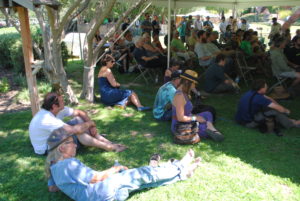
Cuauhtemoc Villa, whom I had the pleasure of moderating at the Golden Tarp event in Southern Humboldt last year, did an amazing job moderating our Terpenes in Health and Ritual panel at this year’s event. On his way out, he stopped by the gate to deliver a ceremonial organic tobacco gift in recognition of CASP’s efforts to produce and promote real education about cannabis.
Frenchy Cannoli was asked to assume a different role than he’s used to, that of panel moderator rather than panelist. His moderation was thus superbly informed and interested by emerging issues and questions around the subject of cannabis extraction.
We are also indebted to our generous sponsors, first to SC Labs / EnviroCann for providing the quantitative testing for the terpene content at no cost, but in exchange the Isoprene Laboratory Sponsor. Alex Dixon and his crew were integral to the experience and contribution to the education. We are grateful to our Sesquiterpene Sponsors, Terpinator and Thinc Pure. Thank you to TD Cann, Moxie Meds and SoHum Seeds for their Monoterpene level sponsorship! We are forward looking to our next year’s event and wait for the announcement of where it will be located! Please contact us if you are interested in partnering for an event in your area, where you can highlight local expertise and locally grown product as well as educate the public on how to be cannabis connoisseurs!
Please read on to learn more about the awards and analytics!
